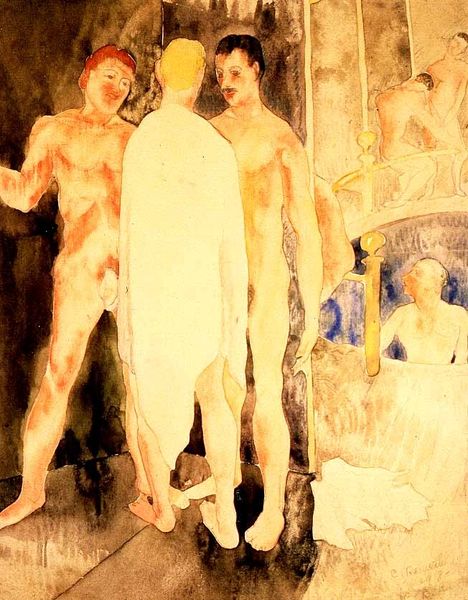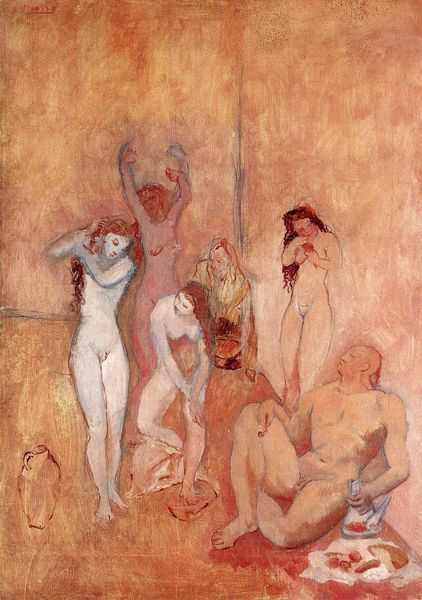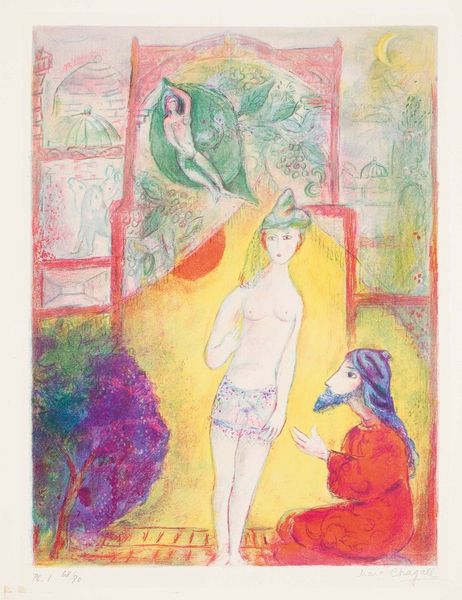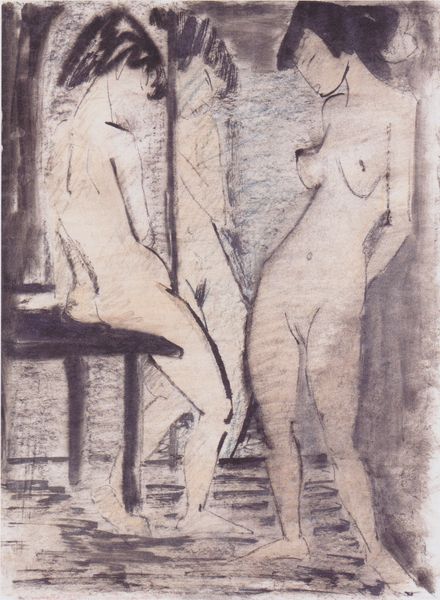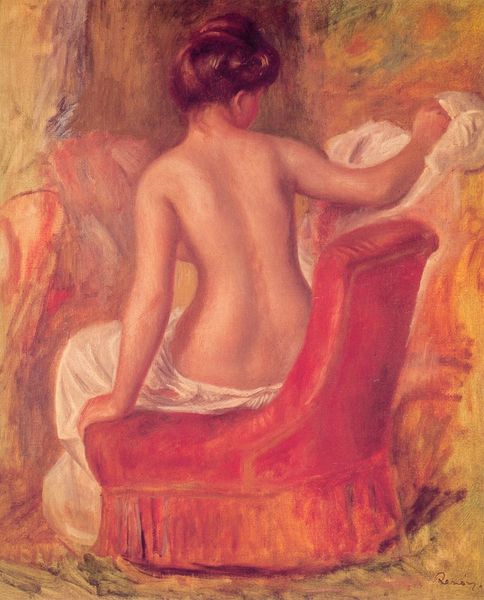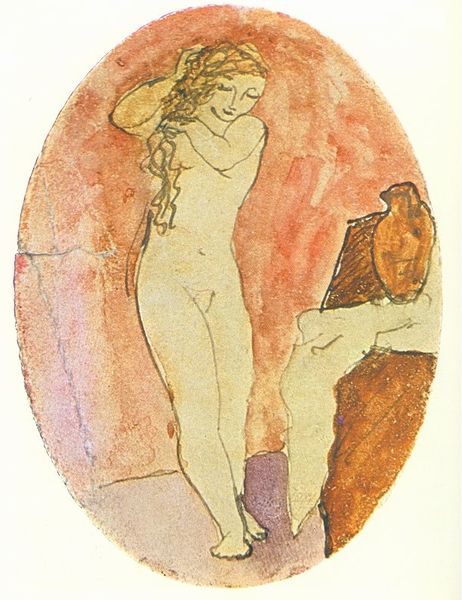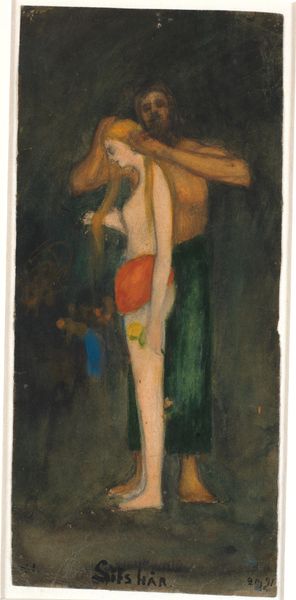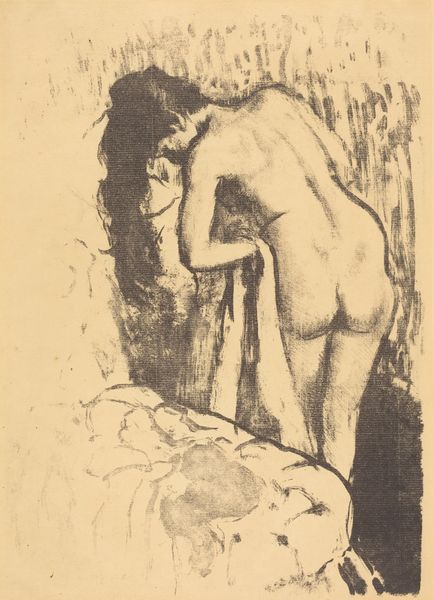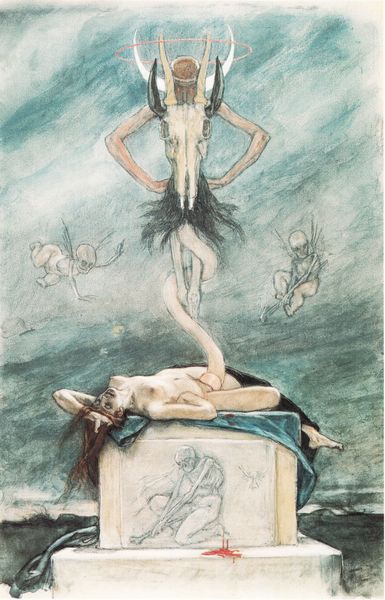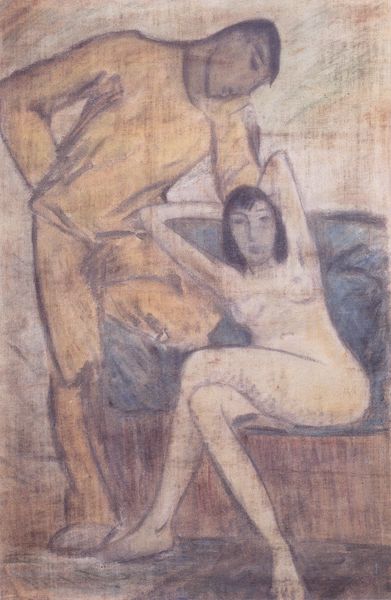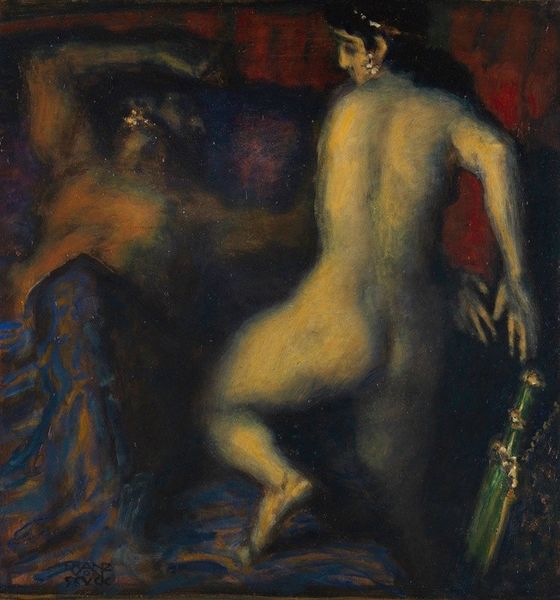
drawing, coloured-pencil, pastel
#
drawing
#
coloured-pencil
#
possibly oil pastel
#
oil painting
#
female-nude
#
coloured pencil
#
pastel chalk drawing
#
symbolism
#
genre-painting
#
pastel
#
nude
#
erotic-art
Dimensions: 24.8 x 16.5 cm
Copyright: Public domain
Curator: Looking at this pastel drawing by Félicien Rops, dating back to 1878, called "Behind the Scenes"... what's your immediate reaction? Editor: Unease, definitely. A staged unease. It’s the voyeurism combined with the almost clownish figure that really hits a strange note for me. Curator: Right? It’s unsettling and glamorous all at once. I imagine that rush before a performance: the electric air backstage but charged with...what is it? Vulnerability? Predation? Editor: More exploitation than vulnerability, I would say. The artist has deliberately positioned the devil figure and the woman taking her dress off like this to signal power dynamics—I mean, the piece resonates deeply with societal anxieties around performance, objectification and the gaze. This symbolism also touches the broader history of controlling women’s bodies, even in artistic spheres. Curator: But doesn’t that tension give the piece its power? It's the clash of beauty and grotesqueness. He’s dressed, she's undressing – and he seems... bored. There’s something about that mundanity juxtaposed with the inherent spectacle that catches me. The colours add another layer: reds and fleshy pinks dominate, like the inside of a beating heart. Editor: Agreed, and while some perceive that aesthetic as "artistic," the deliberate juxtaposition is part of a historically embedded issue around spectatorship in artistic spaces and particularly of the nude female form. Curator: It's complex isn't it? I always find Rops forces you to consider the discomfort – both what’s shown and what's not – those loaded looks are like whispers you can't quite decipher. Is he criticising something or complicit in it? Both maybe? It dances that blurry tightrope. Editor: Exactly. His art opens dialogues on these difficult themes. We should consider whose perspectives and histories might be missing from that very tightrope as well. It pushes us beyond pure aestheticism into confronting societal structures and biases that frame the act of seeing itself. Curator: So, next time you find yourself backstage, take a closer look; what you find in the shadows is probably more revealing than what’s on center stage. Editor: Precisely. Art’s potency often resides in challenging normative narratives, fostering awareness of obscured social and ethical realities, not just what meets the eye on the surface.
Comments
No comments
Be the first to comment and join the conversation on the ultimate creative platform.

